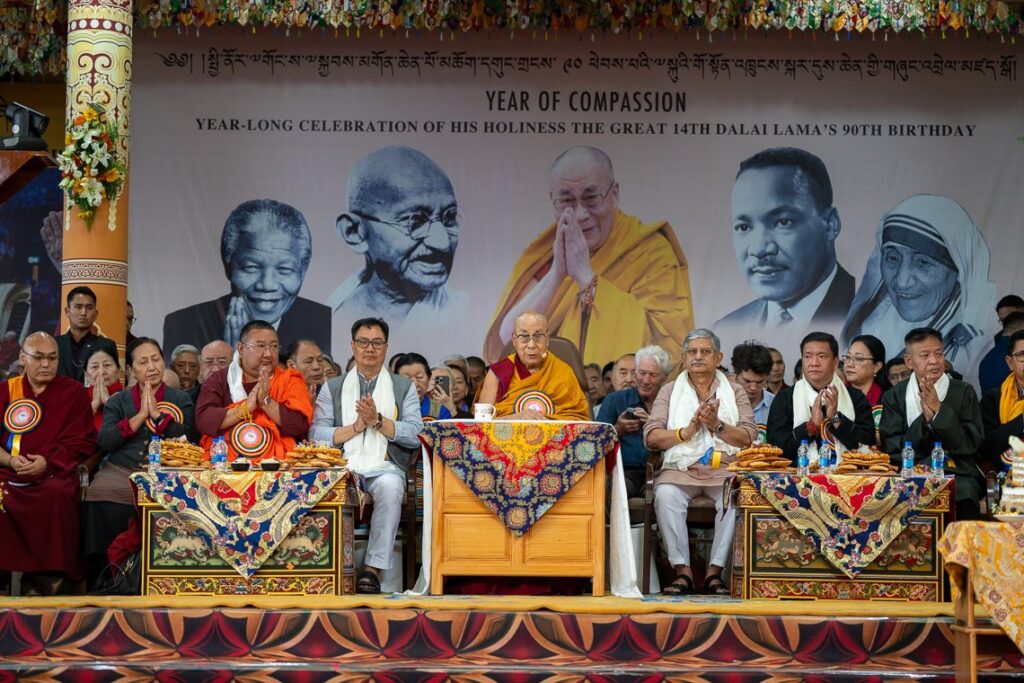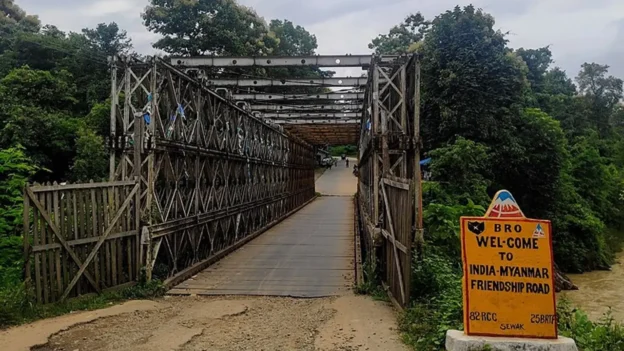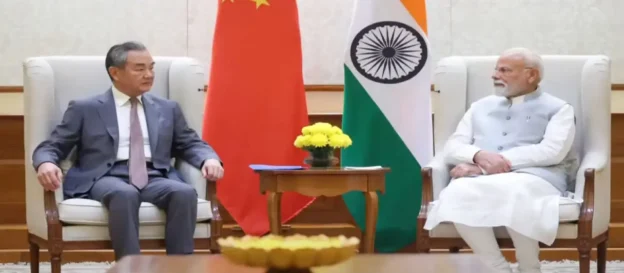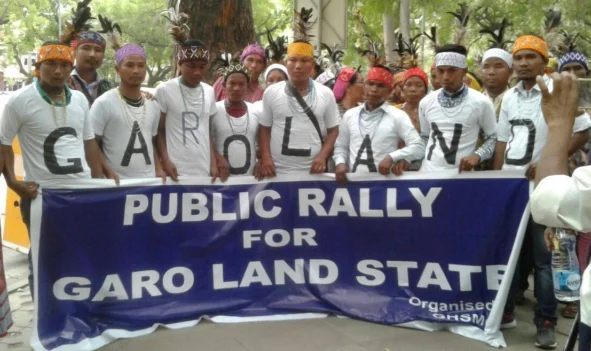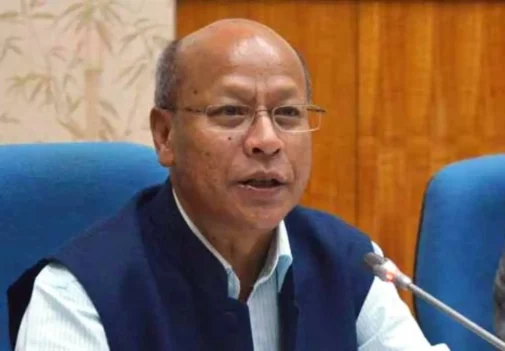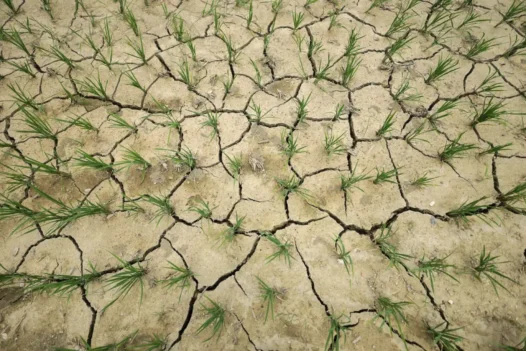Hasimara, July 6: On the bright, prayer-flag-laced morning of July 6, 2025, the mountain town of Dharamshala transformed into a living testament to devotion and hope. Thousands gathered in anticipation, their faces aglow with the joy of celebration and the gentle humility inspired by the presence of His Holiness, the 14th Dalai Lama—who calls himself, in his own words, “just a simple Buddhist monk.” The world had come to his feet: from devoted Tibetans and Himalayan pilgrims to Hollywood celebrities, government dignitaries, artists, and ordinary admirers who had travelled across continents, all united by a single desire—to pay homage to a man who has become the embodiment of compassion, wisdom, and moral clarity.
The Tsuklakhang Tibetan Buddhist complex overflowed with humanity, its courtyards resonant with the songs of the Tibetan Institute of Performing Arts, whose voices soared in a birthday chorus. The scent of incense, the shimmer of traditional costumes, the ceaseless hum of prayer wheels, and the soft vigilance of Indian security personnel created a vivid tableau—one that spoke of resilience, spiritual unity, and the enduring appeal of the Dalai Lama’s teachings.

Yet this celebration was far more than the marking of another year. It became a pageant of historic importance, coming as it did on the heels of an epochal announcement. On July 2, the Dalai Lama had issued a statement that rippled across the world, asserting with unmistakable clarity that the authority to recognize his future reincarnation rests solely with the Gaden Phodrang Trust—the Office of His Holiness—and with no other entity. The very fabric of the Tibetan cause, the future of its spiritual leadership, and the continuity of the Dalai Lama institution were woven anew with this proclamation. It was a reaffirmation of faith, tradition, and the right of a people to determine their spiritual destiny.
Support for this statement burst forth from all corners—Tibetan communities in exile and in Tibet, Buddhist practitioners from Mongolia, the Russian Federation, and even from inside mainland China. The appeal for the continuation of the Dalai Lama institution echoed through messages from the Tibetan Parliament in Exile, members of the Central Tibetan Administration, NGOs, and Buddhist faithful across Asia. The Dalai Lama himself, in a voice both gentle and resolute, shared that these heartfelt appeals had inspired his decision. Most movingly, he spoke of messages received “through various channels from Tibetans in Tibet making the same appeal,” a poignant reminder of the deep and enduring longing for spiritual continuity among those who live under occupation.
At the heart of the celebrations in Dharamshala was an extraordinary gathering. Leaders from all four principal schools of Tibetan Buddhism—Nyingma, Sakya, Kagyu, and Geluk—assembled from July 2 to July 4, conferring in solemn deliberation on the question of reincarnation. Their voices, united and unwavering, issued a resounding condemnation of China’s repeated efforts to insert itself into this sacred process. “We not only strongly condemn the People’s Republic of China’s usage of the reincarnation subject for their political gain, but will never accept it,” they declared, reaffirming that the recognition of the Dalai Lama’s reincarnation would remain solely within the domain of Tibetan Buddhist tradition.
As the sacred drums echoed and masked dancers spun in the courtyard, China’s government responded with a volley of statements. Beijing, through its spokesperson Mao Ning, clung fiercely to the narrative that reincarnation “must follow the principles of domestic recognition, the ‘golden urn’ process, and approval by the central government.” The state-run media rushed to assemble what it called “historical facts,” pointing to the “golden urn lot-drawing system of 1793” as a cornerstone of legitimacy. Yet, despite this orchestrated outcry, Beijing’s narrative failed to stem the global tide of support for the Dalai Lama and the right of Tibetans to honour their spiritual traditions.

In truth, China’s strenuous attempts to dismiss the Dalai Lama’s declaration and assert its own authority over the reincarnation process seemed only to embolden the spirit of the celebrations. Far from dampening the fervour, Beijing’s efforts made little impression—if anything, they rallied more people to Dharamshala, where the crowd swelled in defiance and devotion. The global chorus of solidarity for the Dalai Lama, reaching even into mainland China, served as a living repudiation of official narratives and a powerful affirmation of faith and freedom. The more China sought to diminish the announcement, the larger and more resolute the gathering became—a tidal wave of reverence that not only overwhelmed any attempt at denial, but also drew the world’s eyes to this Himalayan sanctuary of hope.
What resonated more powerfully was the profound, borderless solidarity for the Dalai Lama—a solidarity that no official statement could erase. From within occupied Tibet and across the diaspora, from India to the West, the world stood with His Holiness. The overwhelming support for his birthday and for his statement on reincarnation was a reminder that the spirit of Tibet—its hope, its faith, its compassion—remains beyond the grasp of political manipulation.
The celebration itself became a living metaphor for this unity. Colourful masked dancers twirled to the ancient rhythms of gongs, pipes, and horns, leading the Dalai Lama, serene and smiling, into the heart of the temple complex. There, amid a sea of devotees, he was presented with a birthday cake crowned with fresh fruit and a white lily—a simple, sweet offering in honour of a life dedicated to others. Indian government ministers joined the gathering, as did Prime Minister Narendra Modi, who sent a message that echoed across the Himalayas: “I join 1.4 billion Indians in extending our warmest wishes to His Holiness the Dalai Lama on his 90th birthday. He has been an enduring symbol of love, compassion, patience and moral discipline.” Hollywood actor Richard Gere, a lifelong friend of Tibet, stood among the guests, his presence another thread in this global tapestry.
In his speech, the Dalai Lama’s words offered more than gratitude—they traced the very heart of his spiritual journey. He spoke tenderly of the human condition, reminding the gathering that at our core, all beings are bound by a natural capacity for love and a calling to help one another. Rooted in the soil of a land where Buddhism flourishes, he described the deep brotherhood and sisterhood that bind the Tibetan people—a kinship built on compassion and a commitment to serve others. Reflecting on the path of the Bodhisattva, he urged his listeners to see all beings as friends and family, and to devote themselves to the service of others with unwavering sincerity.

He paused to thank the assembled gathering, their joy and warmth evident on every face, for sharing in the celebration of his ninety years. “Today, my Dharma friends, and all friends you have gathered with great excitement gathered here and with joy in our heart. I would like to thank you for that. So on this 90th birthday celebration of me, you have come here with great joy in your heart. So thank you,” he said.
Turning inward, the Dalai Lama spoke of Bodhichitta—the spirit of enlightenment—as the guiding star of his life. Rather than seeking admiration for its own sake, he said, it is the practice of holding others dear, placing their well-being above one’s own, that brings true inspiration and draws people together. The real admiration, he suggested, should not arise from self-interest, but from the sincere wish to benefit all sentient beings.
He went on to share the essence of his daily spiritual practice: combining Bodhichitta with the deep understanding of emptiness. These two principles, he revealed, form the foundation of his quest for Buddhahood and are the source of his peace and fearlessness in the face of death. “So, in front of the Jowo Shakyamuni statue in Jokhang Temple, the main image of Buddha, I had taken bhikshu vows with my tutors. I practice my bhikshu vows with the Bodhichitta. So when I practice Bodhichitta well, I will not have to regret during my death. Rather, I will die peacefully,” he said.
In a message released on July 5, the Dalai Lama expressed his particular appreciation for the compassion, warm-heartedness, and altruism that so many had brought to Dharamshala for his birthday. He reminded all that while material progress is important, “it is vital to focus on achieving peace of mind through cultivating a good heart and by being compassionate, not just toward near and dear ones, but toward everyone. Through this, you will contribute to making the world a better place,” he said.
He spoke not only as a spiritual leader but as a student of ancient Indian wisdom, a champion of human values, and a custodian of Tibetan culture and heritage. He vowed to continue his work—promoting harmony among religions, championing the wisdom of the mind and emotions, and striving for a more compassionate, peaceful world.
Closing his remarks, the Dalai Lama recalled the teachings of Buddha and the guidance of Indian masters such as Shantideva, whose aspirations for the happiness and enlightenment of all beings he strives to uphold.
Thus, the 90th birthday of the Dalai Lama was not merely a festival of devotion, but a vivid affirmation of identity, resolve, and hope. Against the backdrop of political tension and historical uncertainty, the celebration in Dharamshala radiated with an energy that transcended borders—offering a universal call to compassion, wisdom, and unity for all humanity.

